|
71. Lasiommata maera (Linnaeus 1758) / Large Wall brown / Nymphalidae – Satyrinae
NL: grote argusvlinder, rotsvlinder / D: Braunauge, Rispenfalter / F: ♀ l’ariane, ♂ le némusien
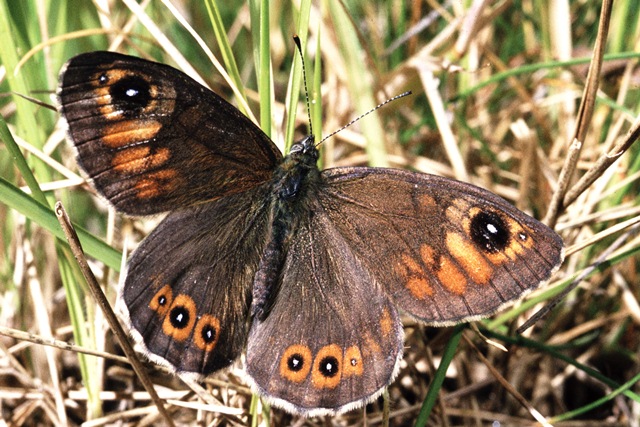  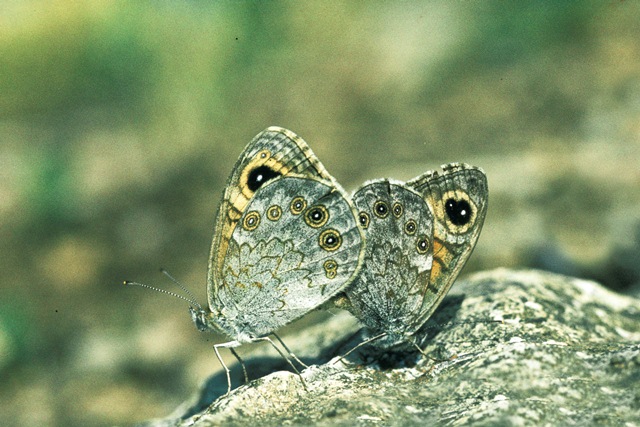
Photographs: Frits Bink ©.
Medium-sized or large, wing length 24 (22-28) mm. In the Benelux, the species occurs on steep hill slopes in Luxemburg and Wallonia and also on stony chalk grassland. In Flanders and the Netherlands it is recorded only as a stray.
Butterfly is on the wing from early-May until early-September and peaks end-May. The species is known from sub-continental to continental climates, amplitude 7 to 17. Required heat sum for a single generation 400°d, maximum tolerated 2600°d and corresponding climate windows 19 and 44 weeks.
In most of the European distribution area, from the polar region to the Mediterranean, the species occurs is univoltine; however, in Vosges and Lorraine, France, and also in nearby Wallonia and Luxemburg it is bivoltine and known as subspecies Lasiommata maera adraste.
Ecological characteristics
Behaviour over time
Overwintering: half grown larvae in third instar, 12-14 mm in length, hidden in a tussock of its host plant.
Reproduction: oviposition starts after 3-5 days when the body contains 46 (40-52) eggs, observed potential production 5.2 times as much.
Larval feeding periods: in summer brood 6 weeks, in overwintering generation 5 weeks in summer and autumn and 6 weeks in spring.
Generations: in Benelux and France, partial two, in other parts of Europe one, in the Mediterranean it aestivates in summer as small larva.
Spreading of risk: partial follow-up broods, flexibility in diapause.
Life cycle: egg 8 (5-12) days; larva summer brood 40 (35-44) days, overwintering generation 37-47 weeks; pupa 16 (10-24) days.
Life span of adult: rather long, 3 weeks.
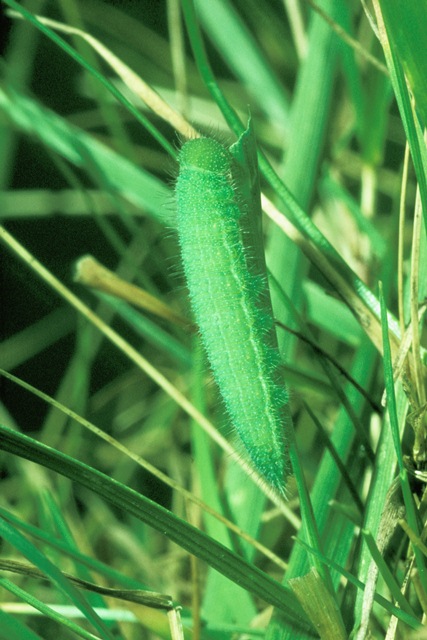 
Photographs: Frits Bink ©.
Behaviour in space
From stay-at-home to migrant: stay-at-home, spatial requirement considerable.
Finding a mate: male perches and patrols.
Orientation in the landscape: stony terrain and scree, steep slope with sparse grass vegetation.
Oviposition: on carefully selected tussocks of the host plant.
Defence
Threats from other organisms: avoiding predators by camouflage in larva and adult at rest.
Threats from the environment: too luxurious development of the vegetation.
Feeding habits
Adult: nectar of flowers in the herb vegetation.
Larva: nocturnal feeding when fully grown and when weather is too dry and hot during the day.
Larval foodplants
Plant species: Poaceae, e.g. Bromus erectus, Festuca ovina, F. rubra, Poa compressa, P. pratensis.
Journal
Rearing experiment based on specimens from Luttenbach, Vosges, France:
7 September 1981: females captured on a road verge and they produced a lot of eggs.
2 October: larvae 9-10 mm in length.
18 October: larvae divided into 2 groups: one under natural conditions, the other given 18 hours light and 25°-28°C temperature.
1. Series exposed to 18 hours light per day:
1 November: two larvae pupated.
8 November: in experiment four larvae pupated and three in diapause.
10 November: first pupa hatched.
29 November: last pupa hatched.
2. Natural condition series:
Overwintered outdoors.
21 February 1982: larvae active, basking, 10-12 mm in length.
18 April: larvae nearly fully grown.
9 May: four pupae present.
16 May: first adult appeared.
17 May: two pupae hatched.
Table 71-1. Results of dissections

Additional figure: Karlson & Wiklund 1985, obtained 232 eggs within 16 days longevity.
Table 71-2. Collection and observation localities
B, Nîsmes, Tiènne-Breumont, 215 m, 50° 04’ 40”N – 4° 32’ 35”E; 28 May 1982.
D, Arnstein 50° 01’ 57”N – 9° 47’ 41”E; 22 July 1984.
D, Blankenheim 50° 22’ 40”N – 6° 41’ 05”E; 20 June 1983.
D, Lorch, 300m, 50° 02’ 05”N – 7° 47’ 56”E; 26 May 1986.
E, Jalon 38° 43’ 24”N – 0° 00’ 22’W; 10 March 2005.
EST, Valge raba 58° 26’ 29”N – 25° 14’ 09”E; 8 July 1999.
F, Aurel, 400 m, 44° 43’N – 5° 16’E; 29 August 1984, 2 September 1984.
F, Averdon 47° 39’ 38”N – 1° 17’ 23”E; 30 August 1982.
F, la Bruyère 45° 39’ 01”N – 5° 38’ 09”E; 25 August 1984.
F, Lorraine, Lion-devant-Dun, 300 m, 49° 23’ 40”N – 5° 14’ 03”E; 12 June 1984.
F, Lorraine, Damvillier 49° 21’ 27”N – 5° 24’ 21”E; 12 June 1984.
F, Vosges, Bollenberg, 363 m, 47° 56’ 54”N – 7° 15’21”E; 25 July 1983, 11 June 1984.
F, Vosges, Hohneck, 1283 m, 48° 02’ 03”N – 7° 02 ‘ 27”E; 23 July 1983.
F, Vosges, Luttenbach 48° 02’ 07”N – 7° 06’ 50”E; 7 September 1981.
F, Vosges, le Zinnkoepfle, 481 m, 47° 57’ 56”N – 7° 15’ 08”E; 10 July 1984.
GR, Rhodos 36° 12’N - 28° 04’E; 29 April 1990.
S, Öland, Ismantorp borg 56° 44’ 44”N – 16° 38’ 33”E; 8 July 1982.
Fig. 71-1. Lasiommata maera, phenogram adapted from Fichefet et al. 2008: 221.
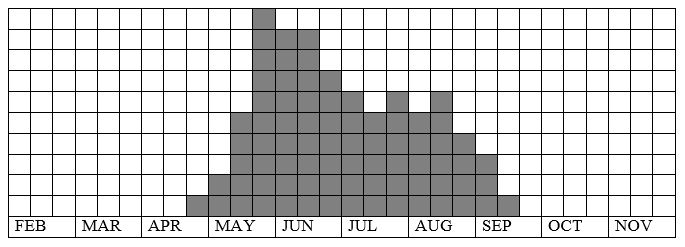
Fig. 71-2. Lasiommata maera, habitat characteristics.
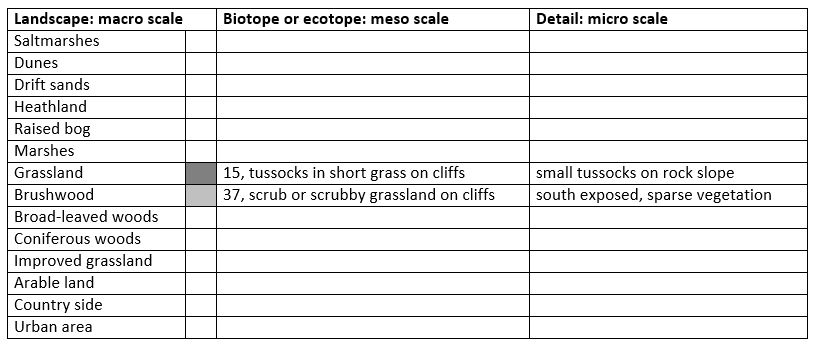
Fig. 71-3. Lasiommata maera, climate matrix, heat-sums 400 - 2600°d.
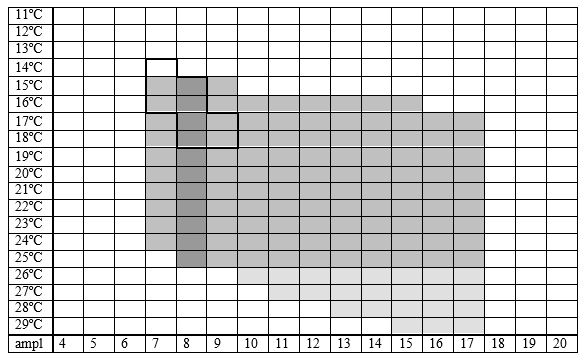
|










